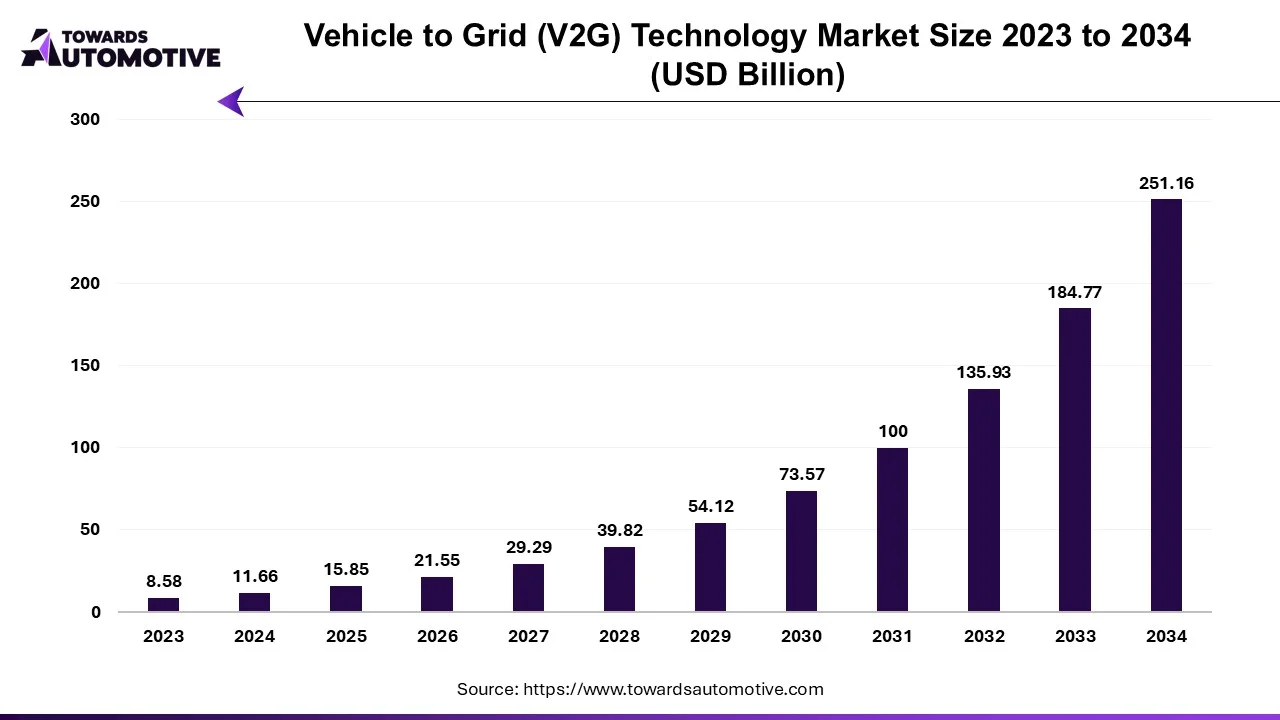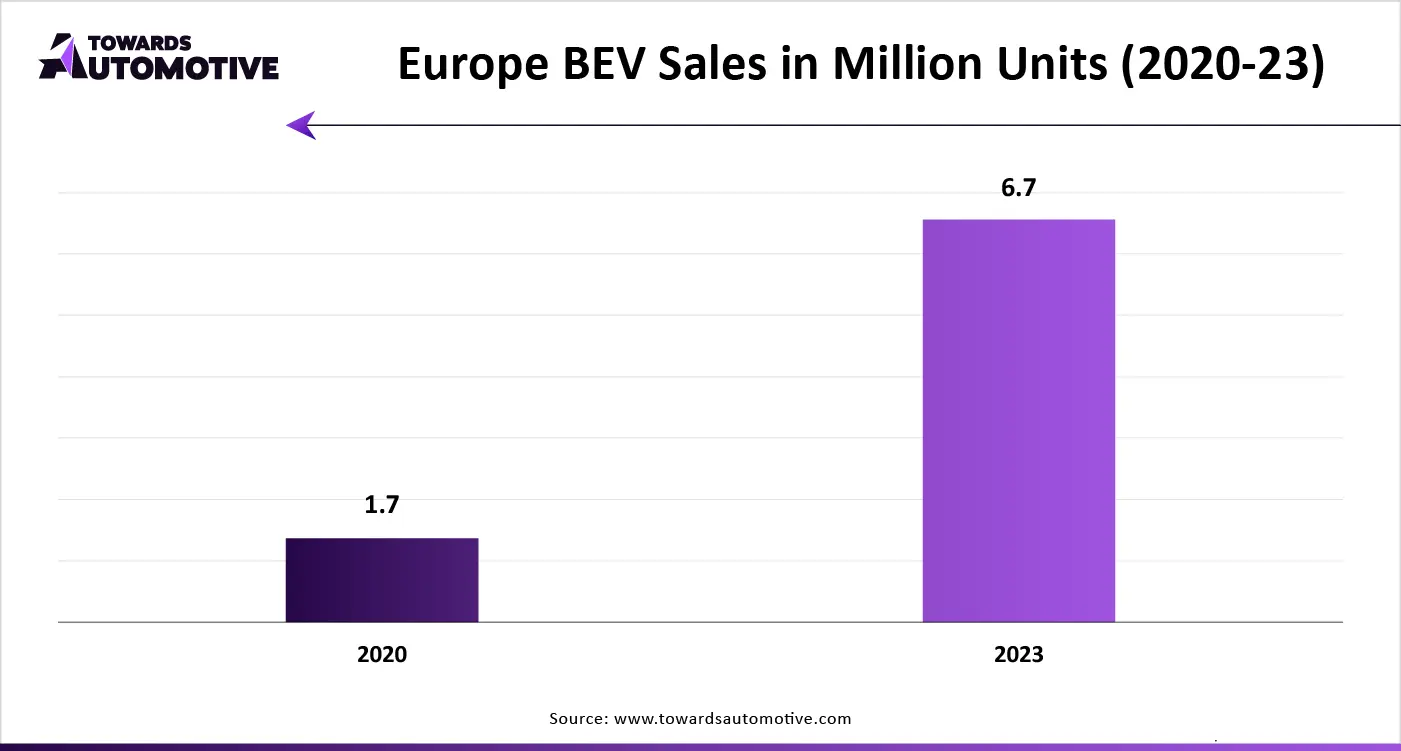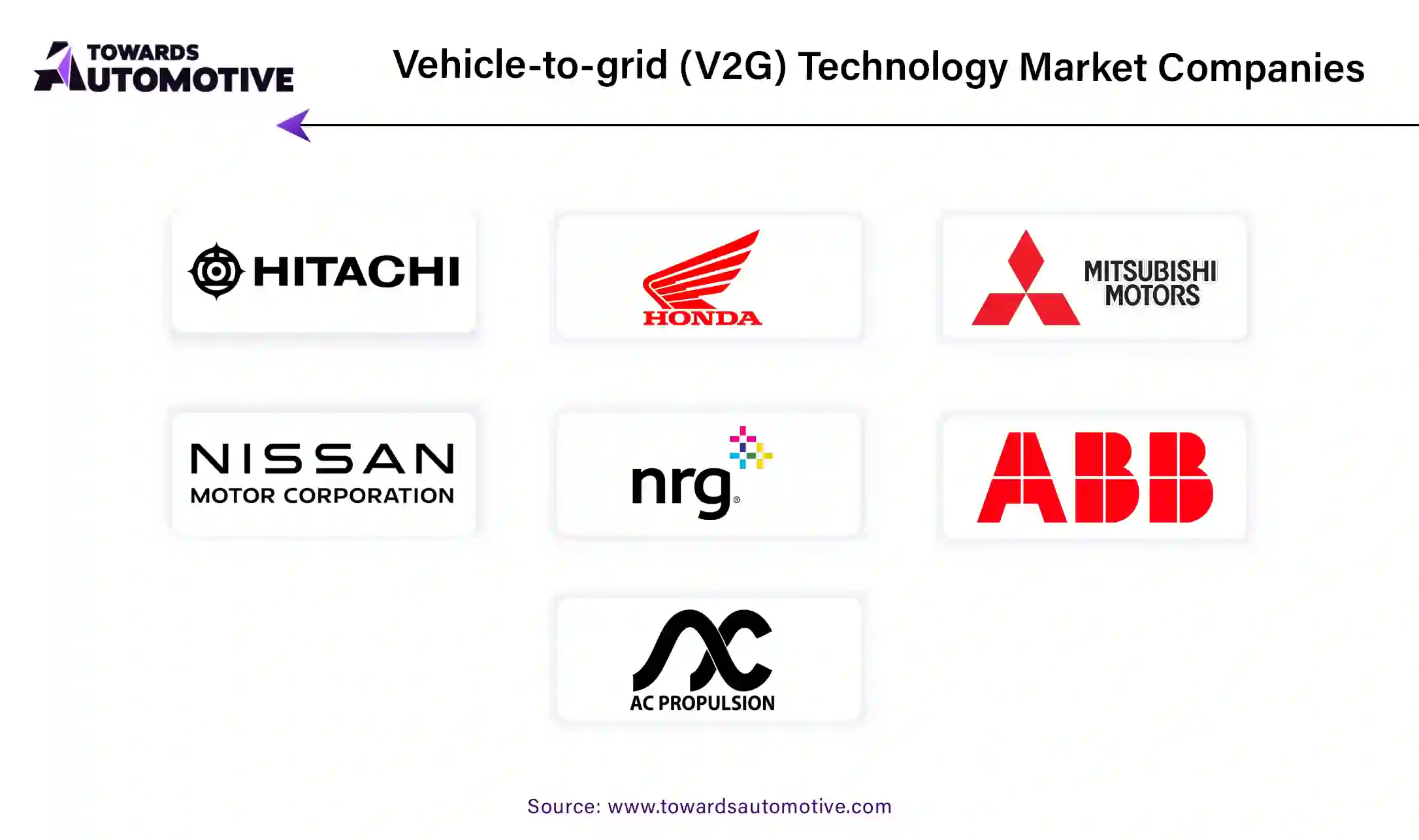October 2025
The vehicle-to-grid (V2G) technology market is expected to grow from USD 15.85 billion in 2025 to USD 251.16 billion by 2034, with a CAGR of 35.93% throughout the forecast period from 2025 to 2034.

The vehicle-to-grid (V2G) technology market is an emerging segment within the broader electric vehicle (EV) ecosystem, driven by the growing demand for clean energy solutions and sustainable transportation systems. V2G technology enables two-way communication between electric vehicles (EVs) and the power grid, allowing vehicles to not only charge from the grid but also feed electricity back into it. This innovative technology supports the grid by providing an additional source of energy storage, helping to balance supply and demand, particularly during peak hours or when renewable energy production is low. With the rapid growth of the EV market, V2G technology holds the potential to revolutionize how electricity is stored and distributed. Governments around the world are increasingly recognizing the benefits of V2G, with many offering incentives and implementing policies to promote its adoption as part of their broader goals for reducing carbon emissions and advancing energy efficiency. Additionally, the integration of V2G technology is seen as a way to optimize the utilization of renewable energy sources like solar and wind, enabling a more resilient and sustainable energy infrastructure. As the world transitions towards cleaner and more efficient energy solutions, the V2G technology market is poised for significant growth, with substantial opportunities for innovation and market expansion in the coming years.
AI plays a significant role in the Vehicle-to-Grid (V2G) technology market by enhancing the efficiency, reliability, and scalability of energy exchanges between electric vehicles (EVs) and the grid. One of the primary applications of AI in V2G is optimizing energy management and grid integration. AI algorithms can predict energy demand, monitor real-time grid conditions, and intelligently manage when and how EVs charge or discharge energy. This predictive capability helps balance supply and demand, ensuring the grid operates efficiently while reducing strain during peak times.
AI can also improve the management of distributed energy resources (DERs), like EVs, by incorporating data from weather forecasts, energy consumption patterns, and renewable energy availability. Machine learning models can analyze vast amounts of data to identify patterns and predict energy needs, optimizing the timing for charging and discharging EV batteries. This reduces grid congestion and ensures that energy is used where it’s needed most, contributing to overall grid stability.
Furthermore, AI-enabled V2G systems can enhance the coordination between EVs and renewable energy sources, such as solar and wind power. By forecasting renewable energy production, AI can optimize when to draw energy from EVs or supply it back to the grid, ensuring better integration of renewable resources.
The growing demand for bi-directional charging technology plays a significant role in driving the growth of the vehicle-to-grid (V2G) technology market. As electric vehicles (EVs) become more widespread, there is a rising need for charging systems that allow not just charging but also the ability to send power back to the grid. Bi-directional chargers enable this two-way energy flow, empowering EV owners to use their vehicles as energy storage systems. This capability helps in optimizing energy use, supporting grid stability, and enabling the integration of renewable energy sources. As more consumers and businesses seek solutions for energy independence and cost savings, the demand for V2G technologies is increasing.
Additionally, bi-directional charging facilitates vehicle-to-home (V2H) applications, allowing consumers to use their EVs as backup power during outages, which further fuels adoption. Governments and utilities are also promoting bi-directional charging as a part of their efforts to transition to smarter and more sustainable energy grids, which boosts market growth. This technology’s potential to reduce energy costs, increase grid efficiency, and contribute to energy sustainability is further accelerating its adoption across residential, commercial, and industrial sectors. The increasing emphasis on energy storage, renewable energy integration, and smart grid systems ensures that bi-directional charging will be a key driver in shaping the future of the V2G technology market.
The growth of the vehicle-to-grid (V2G) technology market faces several restraints. High implementation costs, including the need for specialized infrastructure and advanced EVSE, pose a significant barrier. Additionally, regulatory and standardization challenges, such as the lack of universal protocols for V2G systems, hinder widespread adoption. Technical limitations, such as battery degradation from frequent charging and discharging cycles, further restrict market expansion. Moreover, consumer resistance to adopting V2G systems due to concerns over vehicle performance and grid stability adds to the market's growth challenges.
Advancements in the Combined Charging System (CCS) are creating significant opportunities in the vehicle-to-grid (V2G) technology market. CCS, a standardized and globally accepted charging protocol for electric vehicles (EVs), has evolved to support high-power fast charging and bi-directional charging capabilities, which are essential for V2G integration. As V2G technology relies on the ability to send power from electric vehicles back to the grid, the development of CCS to support this bi-directional flow enables seamless interaction between EVs and the grid. The improved efficiency, reliability, and speed of CCS chargers enhance the overall user experience, making V2G systems more accessible and practical for everyday use.
Furthermore, advancements in CCS ensure compatibility with a wider range of electric vehicles and grid systems, promoting broader adoption of V2G technology. The increased use of CCS technology is crucial for the deployment of smart charging infrastructure, which optimizes energy distribution and reduces costs associated with grid management. This is especially important as the global transition to renewable energy sources requires flexible and responsive grid systems. The standardization of CCS for V2G applications also fosters collaboration among automakers, utilities, and technology providers, accelerating innovation and deployment. As the demand for electric vehicles and renewable energy grows, advancements in CCS are expected to play a pivotal role in driving the expansion of the vehicle-to-grid (V2G) technology market, supporting both energy efficiency and sustainability goals.
The BEVs segment held a dominant share of the market. Battery Electric Vehicles (BEVs) play a pivotal role in driving the growth of the Vehicle-to-Grid (V2G) technology market. BEVs are equipped with large-capacity batteries that not only store energy for vehicle usage but also be used to supply power back to the grid. As BEV adoption continues to rise, the potential for their integration into V2G systems grows exponentially. BEVs offer a reliable and decentralized energy resource that can help stabilize grids, especially during peak demand periods or when renewable energy generation (such as solar or wind) is low.
The increasing shift towards electric mobility, driven by government incentives, environmental concerns, and consumer demand for cleaner alternatives, is creating a large fleet of BEVs capable of supporting V2G systems. BEVs can serve as mobile energy storage units, enabling grid operators to harness energy when needed, which is particularly beneficial for balancing supply and demand in smart grids. Moreover, as BEVs become more widespread, the V2G market benefits from economies of scale, driving down costs and making these technologies more accessible.
Additionally, BEVs' role in supporting renewable energy integration through V2G technology is another key growth driver. By acting as energy storage units, BEVs help store excess energy generated by renewable sources, ensuring that it can be used when production is low. In summary, BEVs are central to the expansion of the V2G market, providing sustainable energy solutions, grid support, and integration with renewable energy sources.

The electric vehicle supply equipment (EVSE) segment led the industry. Electric Vehicle Supply Equipment (EVSE) plays a crucial role in driving the growth of the Vehicle-to-Grid (V2G) technology market. EVSE is the infrastructure that facilitates the charging of electric vehicles (EVs) and enables the bidirectional flow of electricity, which is essential for V2G systems. As the number of electric vehicles on the road increases, the need for advanced EVSE to support both charging and discharging capabilities becomes more critical.
The integration of V2G-compatible EVSE allows EVs to not only draw power from the grid but also return energy when needed, helping to stabilize the grid during peak demand or when renewable energy generation is insufficient. As more consumers adopt electric vehicles, the demand for EVSE that can support V2G capabilities is also increasing. This growing demand is pushing manufacturers to develop and deploy more advanced EVSE solutions capable of enabling seamless two-way energy flow.
Additionally, the expansion of EVSE infrastructure in public and private sectors is instrumental in facilitating the widespread adoption of V2G technology. With governments around the world promoting the adoption of electric vehicles through incentives and policies, the availability of advanced EVSE ensures that V2G systems can be implemented effectively. This further supports the integration of renewable energy sources, making EVSE a key driver in the growth of the V2G market. In essence, EVSE serves as the enabler for V2G, allowing electric vehicles to become an integral part of the smart grid ecosystem.
North America dominated the vehicle-to-grid (V2G) technology market. The growth of electric vehicles (EVs), advancements in smart grid technology, and renewable energy integration are key drivers propelling the Vehicle-to-Grid (V2G) technology market in North America. As EV adoption continues to rise, driven by government incentives, environmental concerns, and consumer preferences for sustainable transportation, the demand for V2G technology has surged. V2G enables EVs to not only consume energy but also supply it back to the grid, creating a decentralized energy system that helps manage fluctuations in power supply and demand. This integration of EVs with the grid boosts grid stability and enhances energy efficiency, which is vital as the region transitions to cleaner energy sources.
Advancements in smart grid technology further support the growth of the V2G market in North America. With the evolution of digital communication systems, real-time data analytics, and advanced metering infrastructure, smart grids are becoming more capable of managing complex energy flows, including those from EVs. These innovations facilitate bidirectional energy exchanges, optimizing energy storage and distribution. This enables grid operators to balance supply and demand more efficiently, integrating renewable energy sources like solar and wind power, which are intermittent by nature.
The increasing integration of renewable energy also drives V2G technology adoption, as it offers a practical solution for storing excess energy generated from renewable sources. By using EVs as mobile energy storage units, V2G helps stabilize the grid, reducing reliance on traditional power plants and making energy consumption more sustainable.
Asia Pacific is expected to grow a significant CAGR during the forecast period. Government policies and regulations, smart city initiatives, and technological advancements are crucial drivers of the Vehicle-to-Grid (V2G) technology market in the Asia-Pacific (APAC) region. Governments in APAC countries, particularly China, Japan, and South Korea, are implementing supportive policies and regulations to promote electric vehicles (EVs) and renewable energy. These policies include subsidies, tax incentives, and ambitious EV adoption targets, encouraging the adoption of V2G technology. By integrating EVs with the power grid, governments aim to reduce carbon emissions and enhance energy security, creating a favorable environment for V2G deployment.
Smart city initiatives are another key driver in APAC, as urbanization accelerates and cities seek sustainable solutions for energy management. V2G technology plays a significant role in smart cities by enhancing grid stability, optimizing energy use, and enabling efficient management of renewable energy sources. As cities move toward digitalization, V2G systems contribute to more flexible, resilient, and efficient urban infrastructure, making them vital for the development of smart cities.
Technological advancements are also driving the growth of the V2G market in APAC. Innovations in electric vehicles charging infrastructure, and smart grid technology have improved the feasibility of V2G systems. The development of bidirectional charging technologies, energy management systems, and communication protocols makes it easier to integrate V2G solutions with existing power grids, facilitating the widespread adoption of V2G in the region and ensuring energy optimization and reliability.

By Vehicle Type
By Component
By Application
By Region
October 2025
March 2025
March 2025
March 2025
We offer automotive expertise for market projections and customizable research, adaptable to diverse strategic approaches.
Contact Us